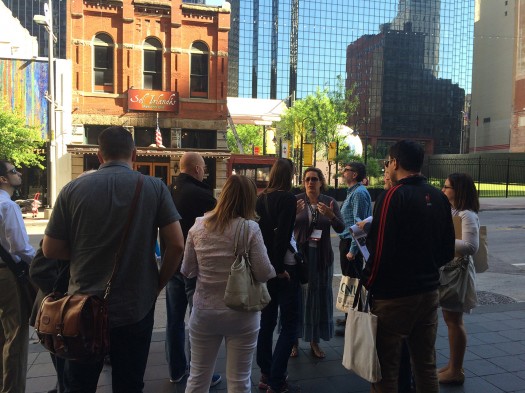Posts Tagged ‘Transect’
Toronto’s Gardiner Expressway: Green light for removal this week?
Last week, passing my Canadian citizenship exam was a poignant moment for me. I am grateful to have dual citizenship in Canada and the US, with the right to live and work in both great countries. I realize that we often spend time on this blog talking about what stands in the way of great…
Read MorePlaceMakers’ Intrepid Inside-Baseball Highlight Reel from CNU23
Having just wrapped up what may have been our favorite CNU ever, in Dallas on April 29 through May 2, we want to share some of the ideas that resonated the most with us. The topics below are snippets of great insights from many voices, including the likes of Andrés Duany, Fort Worth Mayor Betsy…
Read MoreWays to Fail at Form-Based Codes 03: Misapply the Transect (to the region rather than the neighborhood)
When it comes to misapplying — or, more commonly, overly simplifying — the Transect, we’re all guilty on some level. For instance, I often speak generally about its inherent rural-to-urban spectrum and how, as you move through it, the landscape changes its character. The highways and byways whisking you through the wilderness and countryside get…
Read MoreHealthy, or Unhealthy, by Design
A few months ago, we talked about how a great city can be like a great running buddy, calling us to venture outdoors into more active, satisfying lifestyles. The photo-essay accompanying that conversation was on the urbanity of Wilmington, North Carolina. Last week, we were in another North Carolina town, Fuquay-Varina, working to create just…
Read MoreForm-Based Codes? A picture’s worth a thousand words
If the attendees list of Placemaking@Work, my monthly webinar series, is any indicator, we’re increasingly united in our desire to improve the places we call home, wherever those places might be. Over time, I’ve had participants from Hawaii to Russia, from British Columbia to Saudi Arabia, and many points in between. The common thread among…
Read MoreThe Passion of Place
David Byrne noted in last Sunday’s NY Times that people get hooked on cycling because of pleasure, not health, money, or carbon footprint. “Emotional gratification trumps reason.” Ben Brown agrees, using Byrne’s “Stop Making Sense” as a blog title on the subject of community engagement and how special interest groups often talk past each other.…
Read MoreBrave New Codes Reach Tipping Point: When, Where, Why?
A year ago, Apple’s sales of its iPhone and iPod Touch eclipsed 40 million units, confirming their potential to fundamentally retool our future opportunities and patterns of daily life. Today, a year later, form-based codes hit a similar milestone, with similar implications, as over 330 cities and towns around the world — representing over 40…
Read More

